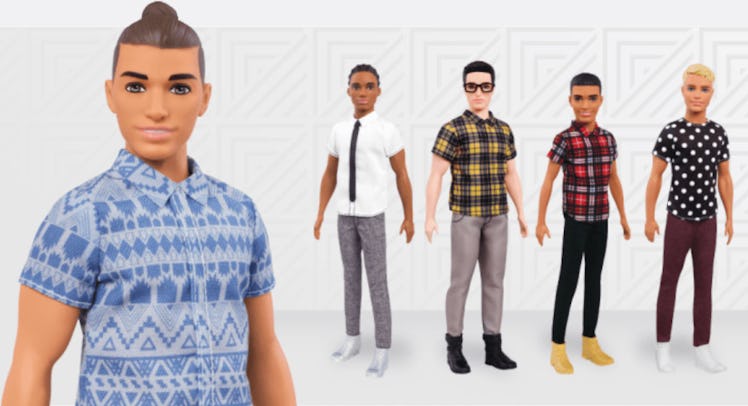Mattel’s Ken Rebranding Gives Barbie a Choice
Ken has evolved from a character into a diverse community of plastic men, some of whom have man buns or glasses or dadbods or cornrows.

This week, Mattel announced the makeover and proliferation of Barbie’s longtime boyfriend Ken, which will henceforth come in a variety skin tones, body types, and hairstyles. The rebranding is intended to reverse a decline in Ken doll sales while offering a product that represents more children. It is also about giving Barbie a less constrained choice. Ken has evolved from a character into a diverse community of plastic men, some of whom have man buns or glasses or dadbods or cornrows.
For Mattel, the decision to return to the playbook that led to a successful Barbie update made a lot of sense. But the issues at play with Ken dolls are a bit different. Why? Because a huge part of Barbie’s change had to do with realistic body expectations and the pitfalls of marketing an unattainable idea to young girls. Ken is a less fraught doll because he’s marketed predominantly to girls as well and because his physique was never as cartoonish as his girlfriend’s. While Ken may not have been an everyman, he was still found to have a body that occurs naturally in roughly one out of every 50dudes, compared to Barbies body, which used to be a one in 10,000 moonshot.
AP
Though bringing more diversity and body positivity to the Barbie universe is a good thing, revamping Ken is unlikely to spark the same sort of cultural conversation as the Barbie turnaround. The new Kend doll is less of a social bellwether and more of a product iteration, an improvement on a fundamentally sound idea. But, at the end of the day, Ken will likely remain an accessory. His value–it’s estimated seven Barbies are sold for each Ken–is derived from his relationship with his main squeeze. As such, the new dolls are about both improved representation of men and more choice for Barbie and the young children working her arms. Whereas old Ken won Barbie’s affection by default, the new Kens must compete amongst themselves.
At the end of the day, empowering Barbie by offering choices is probably a more powerful gesture than letting Ken pack on the pounds. Still, there’s nothing wrong with that approach. Choice is good, but–as young people all learn–not all the choices are gonna be perfect.
This article was originally published on